What the Hell Happened to Blood, Sweat & Tears? That’s the question posed by a probing, timely new documentary of the same name directed by John Scheinfeld. Let me just say that the answer—if you’d seen it, say, play out in a fictionalized narrative like the best-selling Daisy Jones & The Six—would read as too outrageous, too convoluted to seem plausible. But here again, truth is a hell of a lot stranger than fiction. “What the hell happened to Blood, Sweat & Tears” at the apex of their fame practically defies description, but it is unquestionably a story worthy of a good documentary.
Which Scheinfeld’s film surely is.
But let’s back up. In 1970 I was just one of the over four million Americans who owned a copy of the band’s second eponymously-titled album. (Okay, my older brother owned it, on eight-track no less, but it got a lot of play in our house and everyone else’s!) Blood, Sweat & Tears owned the charts, notching eight weeks at the No. 1 slot and sporting three No. 1 singles. You can sing along to them now. “And If I Die …” (written by Laura Nyro), “You’ve Made Me So Very Happy” (co-written by Motown founder Berry Gordy), and “Spinning Wheel” (written by the group’s new lead singer, David Clayton-Thomas) all reached no. 2 on the Billboard Hot 100.
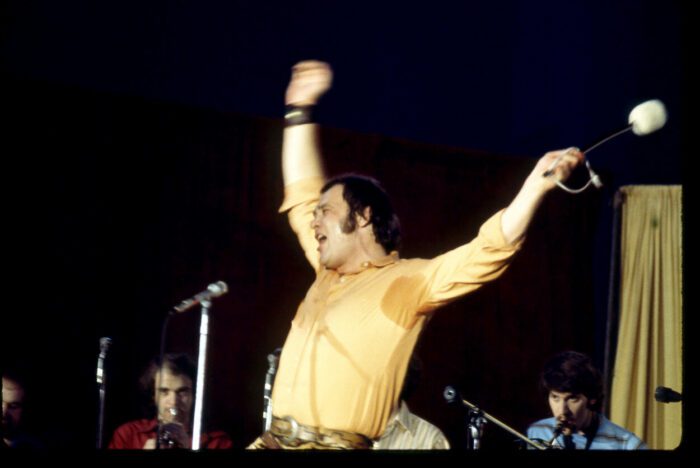
The album was a stunner, coming out of left field, and such a phenomenon that even despite a largely dismissive rock press it beat out the Beatles’ Abbey Road for Grammy® Album of the Year. Blood, Sweat &Tears were a little, I guess, like Chicago Transit Authority, another highly successful horn-based R&B/pop band, except for not later truncating their name, softening their style, descending into cheezy Muzak, and soldiering on for five decades until their tribute groups are twenty times more exciting than the originals. RIP, Terry Kath. But I digress. What happened to a band like Chicago did surely not happen to Blood, Sweat & Tears.
What the hell happened? For starters, Blood, Sweat & Tears toured behind the Iron Curtain, the first American rock band to do so, performing a series of concerts in Yugoslavia, Romania, and Poland. Although hardly the most political of groups—any protest in their music was at most benign and metaphorical—at least a couple of their members were, like most American youth of the time, outspokenly critical of the Nixon administration and the Vietnam War. That they would embark on a tour sponsored by the U.S. State Department was a curious decision.
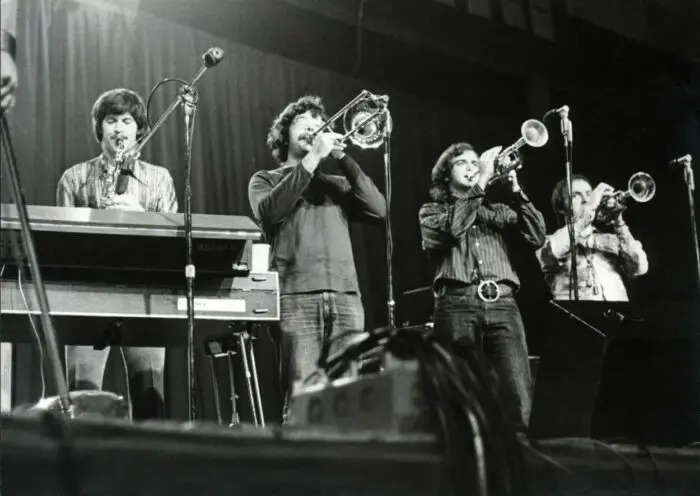
The “Iron Curtain Tour,” as it was dubbed, had its hitches. Lead singer David Clayton-Thomas, a burly Canadian whose second-album showmanship elevated the group into the top echelon of the industry, was served an arrest warrant days before they were to fly overseas; the charges were dropped and the tour got underway as planned. Some shows were big hits with their overseas audiences; others much less so. Every move by every band member was scrutinized both by the U.S. State Department and the Eastern-bloc governments.
Meanwhile, the State Department also commissioned a documentary film of the tour, a second part of the ostensible cultural exchange. (Part of the thinking on the government’s behalf was that to introduce youth in Communist countries first-hand to long-censored American rock music just might be a way to soften those regimes’ long-held opposition to the West.) Donn Cambern, who would decades later become as an Oscar®-nominated film editor for 1985’s Romancing The Stone, was enlisted by the U.S. State Department to direct the film, though it would be subject to the government’s edits and approval.
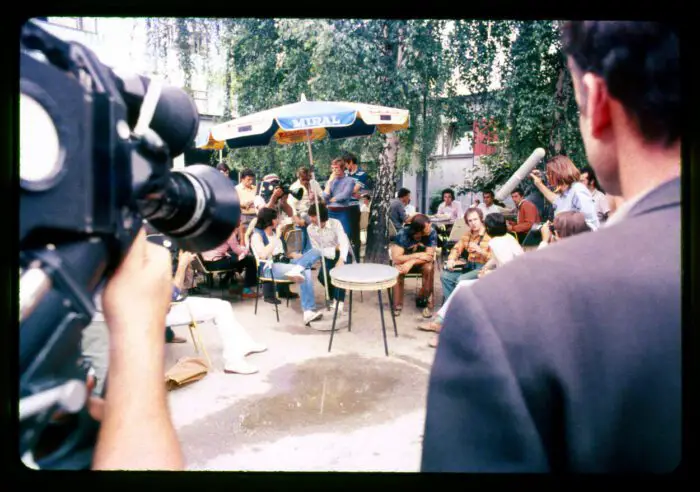
What the Hell Happened to Blood, Sweat & Tears? is not that documentary. Cambern’s film was savagely edited, down to just 40 never-released minutes Scheinfeld was able to track down. The film was never made public and the fallout from the tour disastrous. Remarkably, the decision to tour behind the Iron Curtain pissed off both the left and the right—which was, in 1970 as it is today, pretty much everyone.
The left—the counterculture movement loosely led by the press (Rolling Stone) and the radical agitators (like Abbie Hoffman)—was outraged that the band would tour sponsored by the warmongering U.S. government, and they were all too happy to have a band to bully for what they called the support of the Nixon administration. Never mind that individual members of the group often spoke loudly and directly against the administration’s atrocities in Vietnam.
Meanwhile, the government itself became, apparently, increasingly disenchanted with the band during the tour. The group’s youthful, Western, liberal ways and ideas were just a little too, too much for the State Department officials who kept an ever-tighter rein on their behavior. When the dust settled, the government basically buried the film and the whole affair. And so, within a year, Blood, Sweat & Tears went from being the Beatles-beating, Grammy-winning, top-selling breakout artists of the year to every American’s whipping boys and persona non grata. When last year Rolling Stone compiled a list of The 50 Worst Decisions in Music History,” the band’s Iron Curtain Tour clocked in at Number 7, behind the Rolling Stones hiring Hell’s Angels at Altamont (no. 1) and Decca Records rejecting The Beatles (no. 3). That’s how bad it was.
So: Why did what the hell happened to Blood, Sweat & Tears happen to Blood, Sweat & Tears? That’s what Scheinfeld’s film explores. It’s in many ways a pretty traditional expository-participatory documentary, based on interviews with six surviving members of the nine-piece band, especially Clayton-Thomas, Bobby Colomby, and Steve Katz, as well as filmmaker Cambern, still-kickin’ then Columbia President Clive Davis, assorted journalists, and others, even some who’d seen the tour first-hand, no small feat given its having taken place over a half-century ago. Fortunately, Scheinfeld was also able to track down some forty minutes of footage extant from Cambern’s truncated (and unseen) film, as well as five raw audio tapes recorded live on eight-track during the tour. There is also a copious amount of State Department correspondence regarding the tour, its bureaucratic legalese making for some comic voice-over.
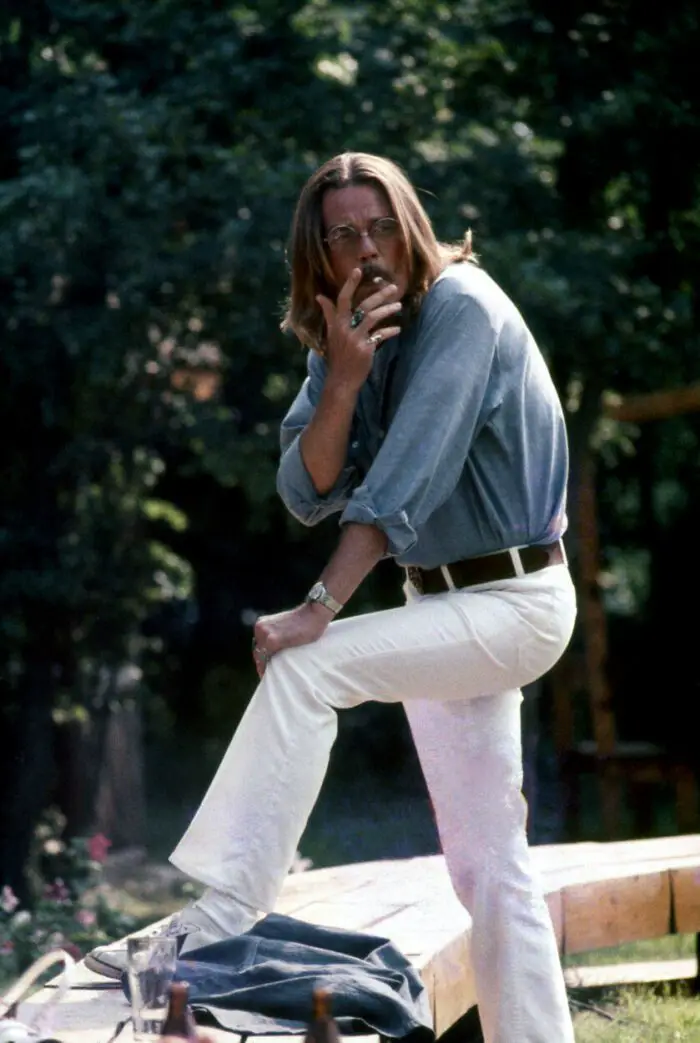
All of the above is fleshed out with still photography, obligatory lower-thirds credits, and some curious reenactments of cloak-and-dagger stuff taking place behind the Iron Curtain. You won’t mistake What the Hell Happened to Blood, Sweat & Tears? for the astonishing remastering and assemblage of Peter Jackson’s verité-inspired Get Back nor for the poetic montage of Brett Morgen’s Bowie doc Moonage Daydream. Nor does it make its case as efficiently as the similarly-themed Sinead O’Connor documentary Nothing Compares.
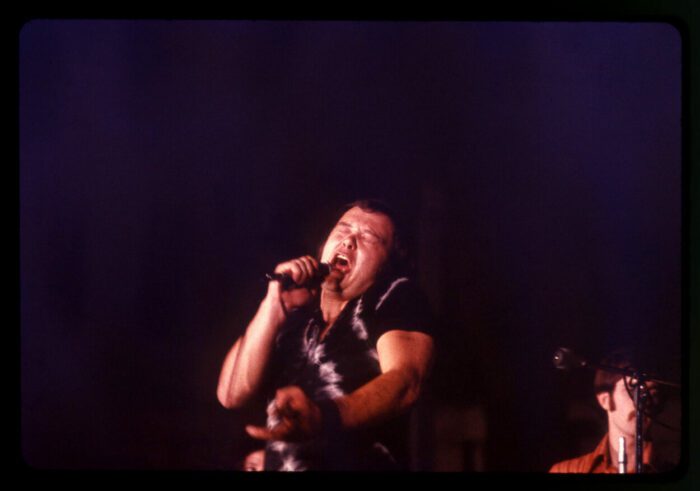
Nonetheless What the Hell Happened to Blood, Sweat & Tears? has a smacking good story to tell. As it turns out, there was a spark that ignited the whole affair, and Scheinfeld’s exhaustive research does the job, digging it out of the dirt and laying it bare for all to see. It’s a plot twist a fanciful fiction writer couldn’t invent.
Trouble was, it was true. And it led to the band’s spectacular demise. Like Clayton-Thomas sang: “What goes up, must come down.” Scheinfeld’s film shows not only What the Hell Happened to Blood, Sweat & Tears? but why it did, and the revelation is every bit worth the journey.
What The Hell Happened To Blood, Sweat & Tears? will be released theatrically in New York and Los Angeles on March 24, 2023, before expanding across North America and Canada via Abramorama. The 111-minute film contains 27 songs from the Blood, Sweat & Tears catalog and an original score composed by Blood, Sweat & Tears leader Bobby Colomby and arranger/composer/musician David Mann and performed by the current group line-up. Also featured in the film are 11 live recordings from the tour, to be made available on Omnivore Records.




Hallo,
i am from Germany an i am a big fan of B,S& T since 1978. Where i can see the movie?
Greetings
Bernd Franco Hoffmann
Thanks for reading Film Obsessive! The film is currently in limited theatrical release in the U.S. and nothing has been announced yet regarding overseas or streaming distribution. So it may be a while before you can! See https://www.bstdoc.com/watch for updates.
Bernd, I read that the film will make its global streaming debut August 20. Details are at https://veeps.com/bloodsweattears/a2bdfcb2-11a6-4d05-adb0-ef189b963559 .